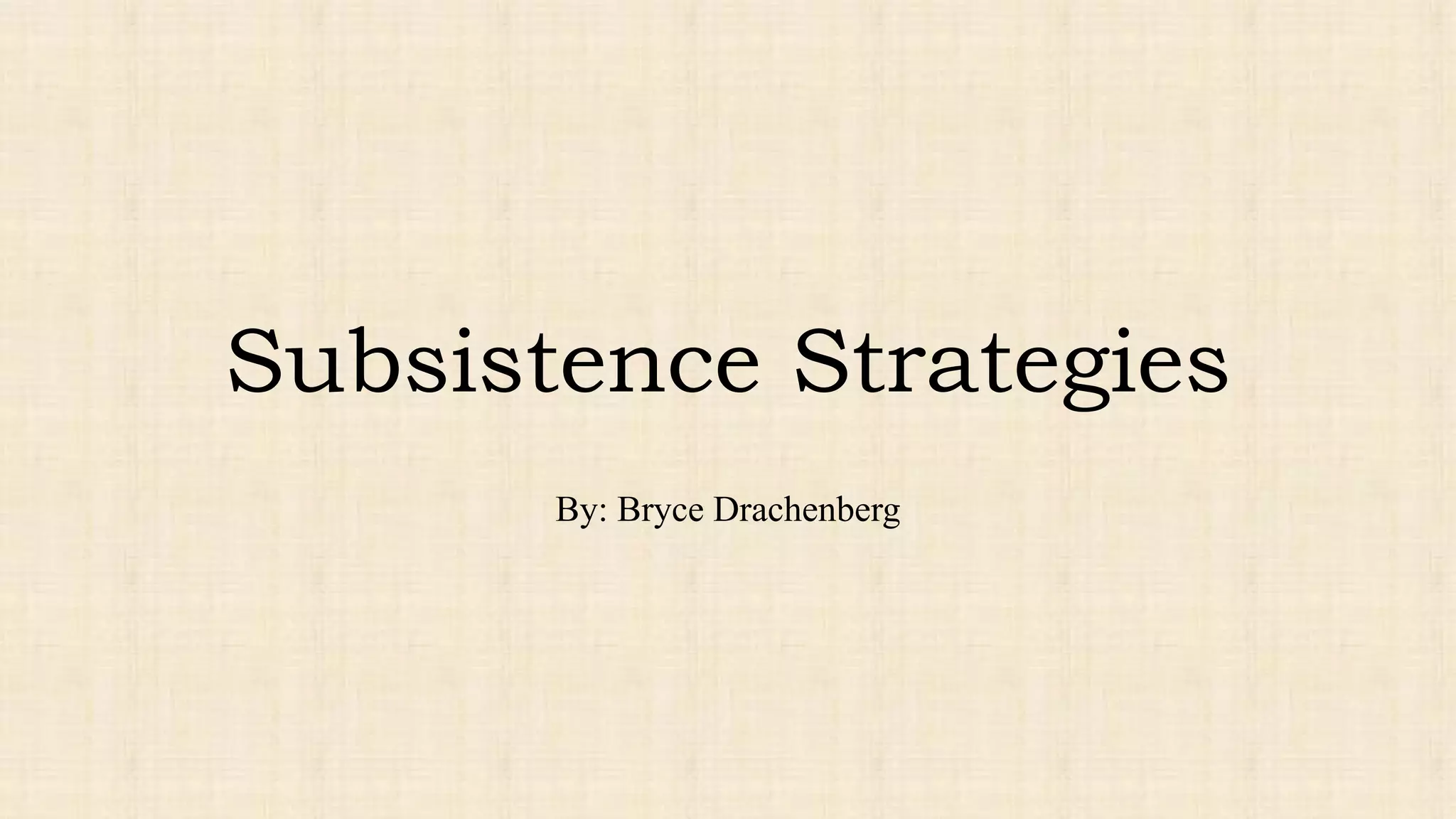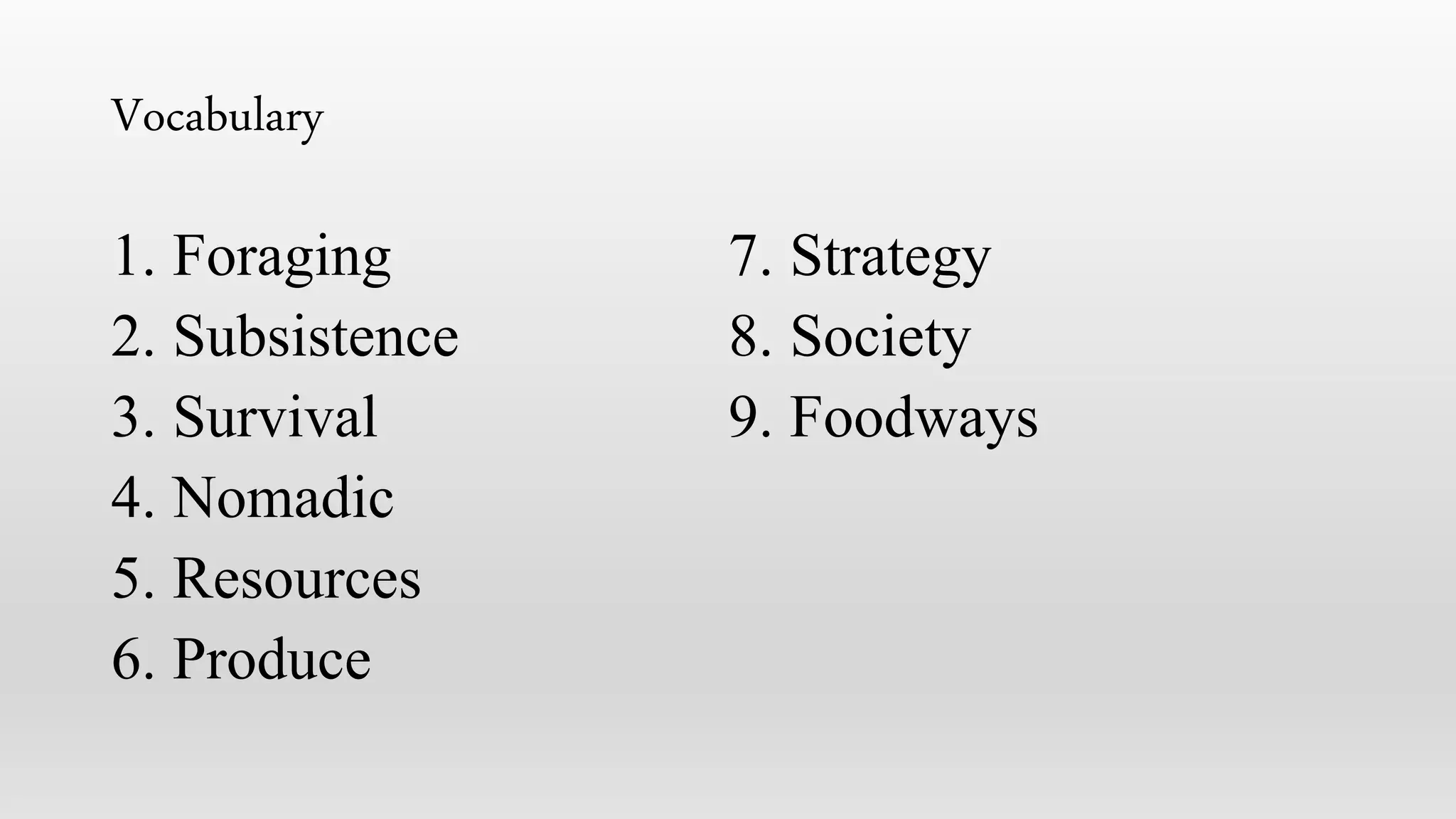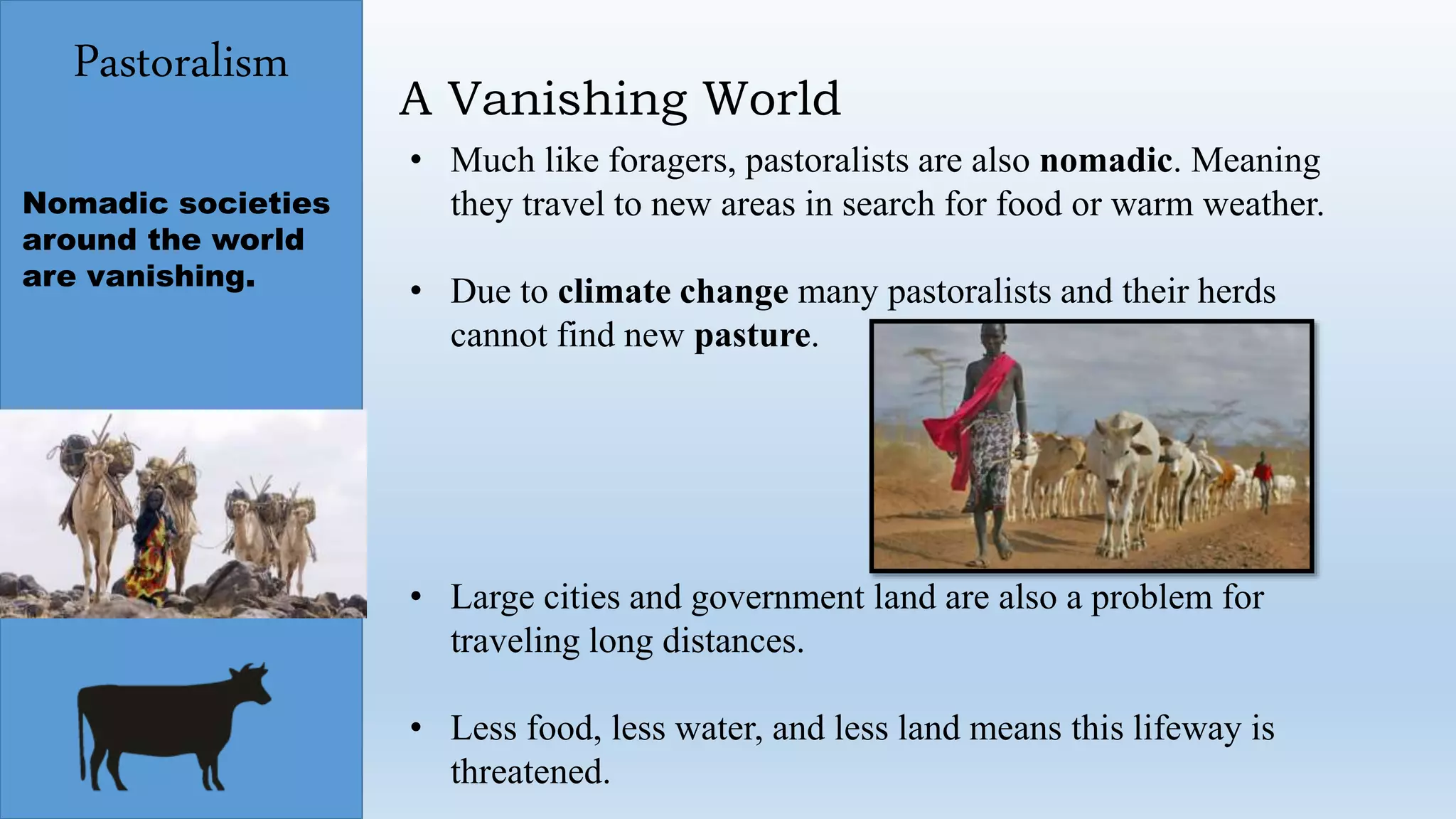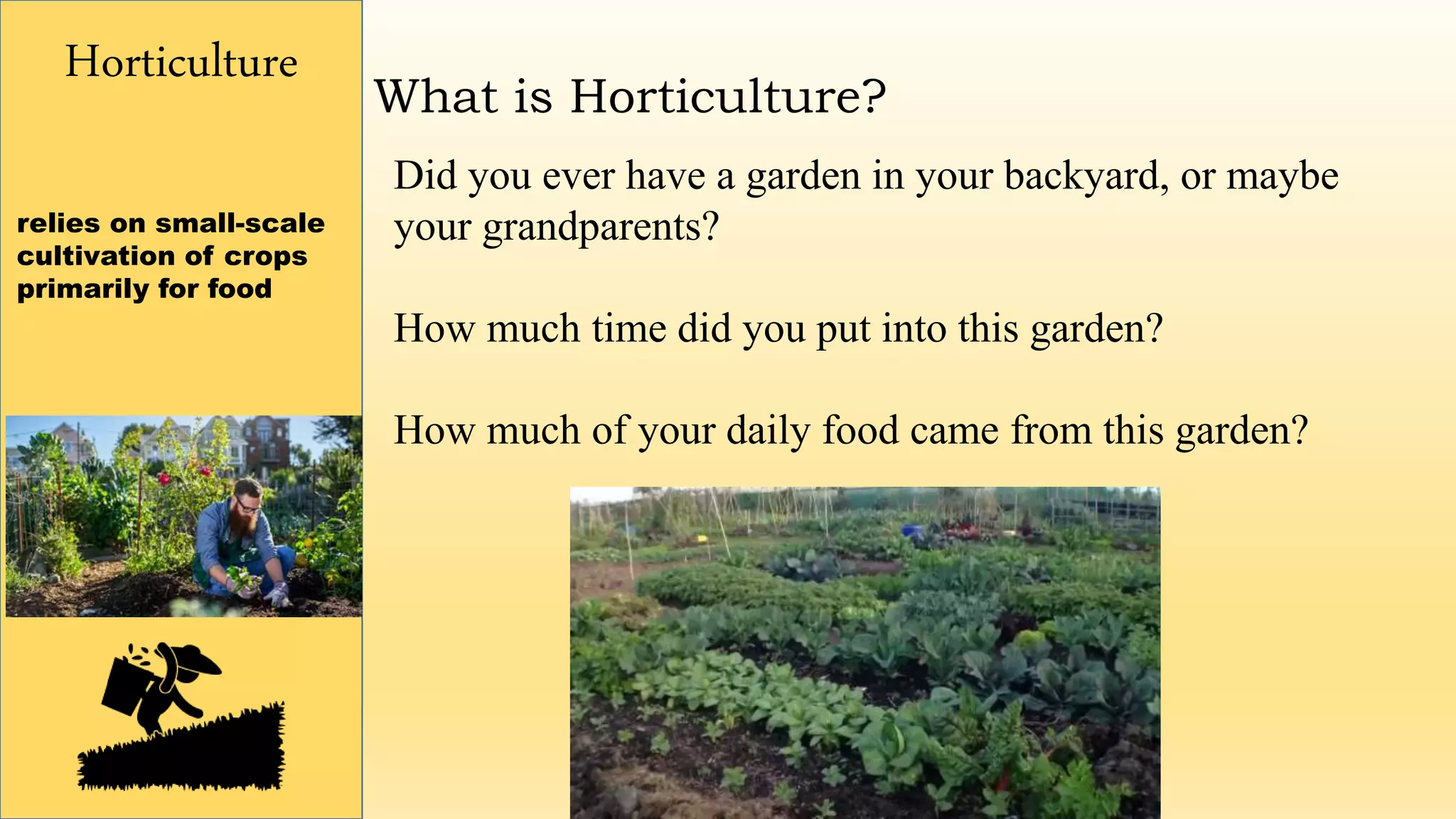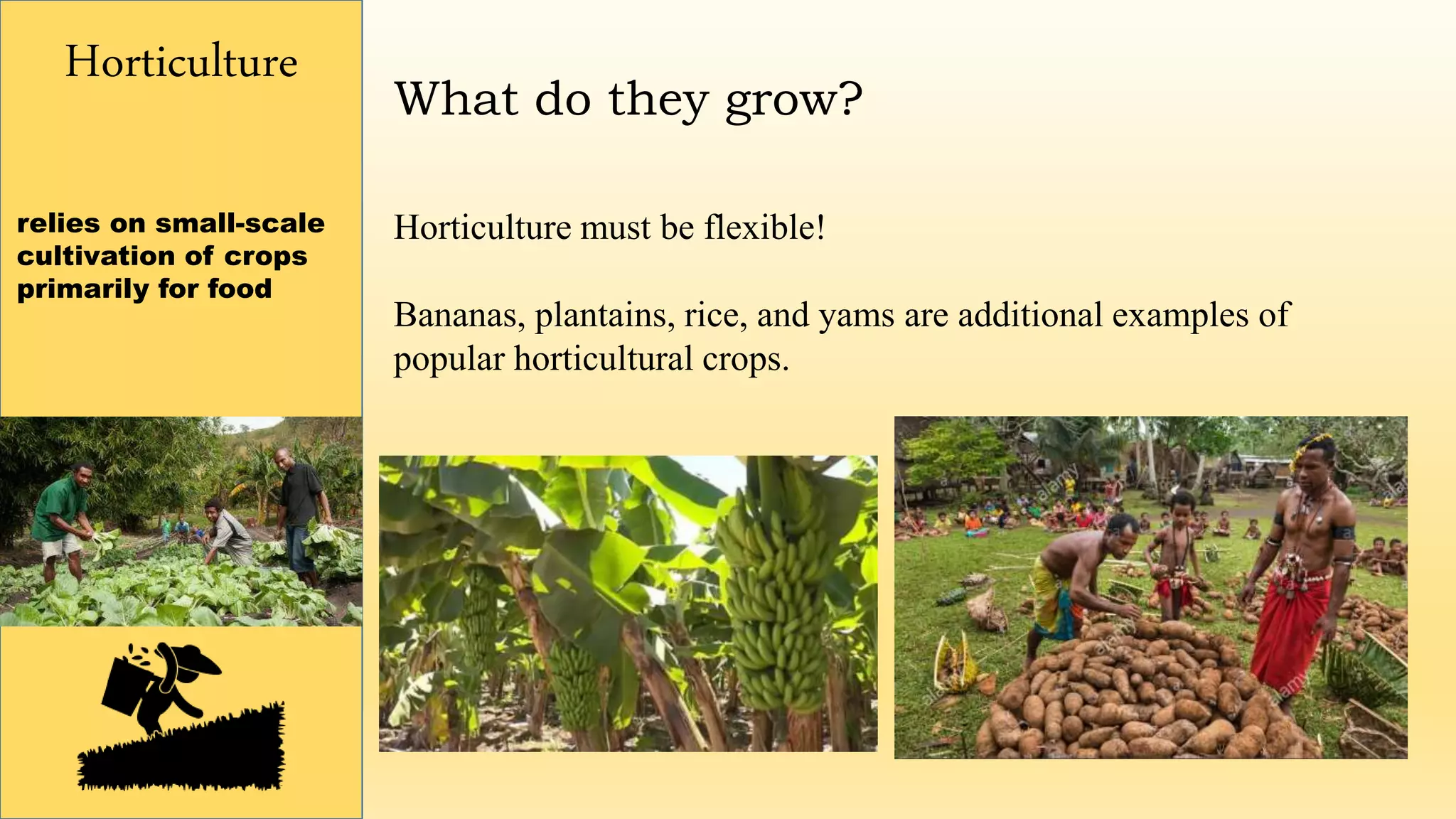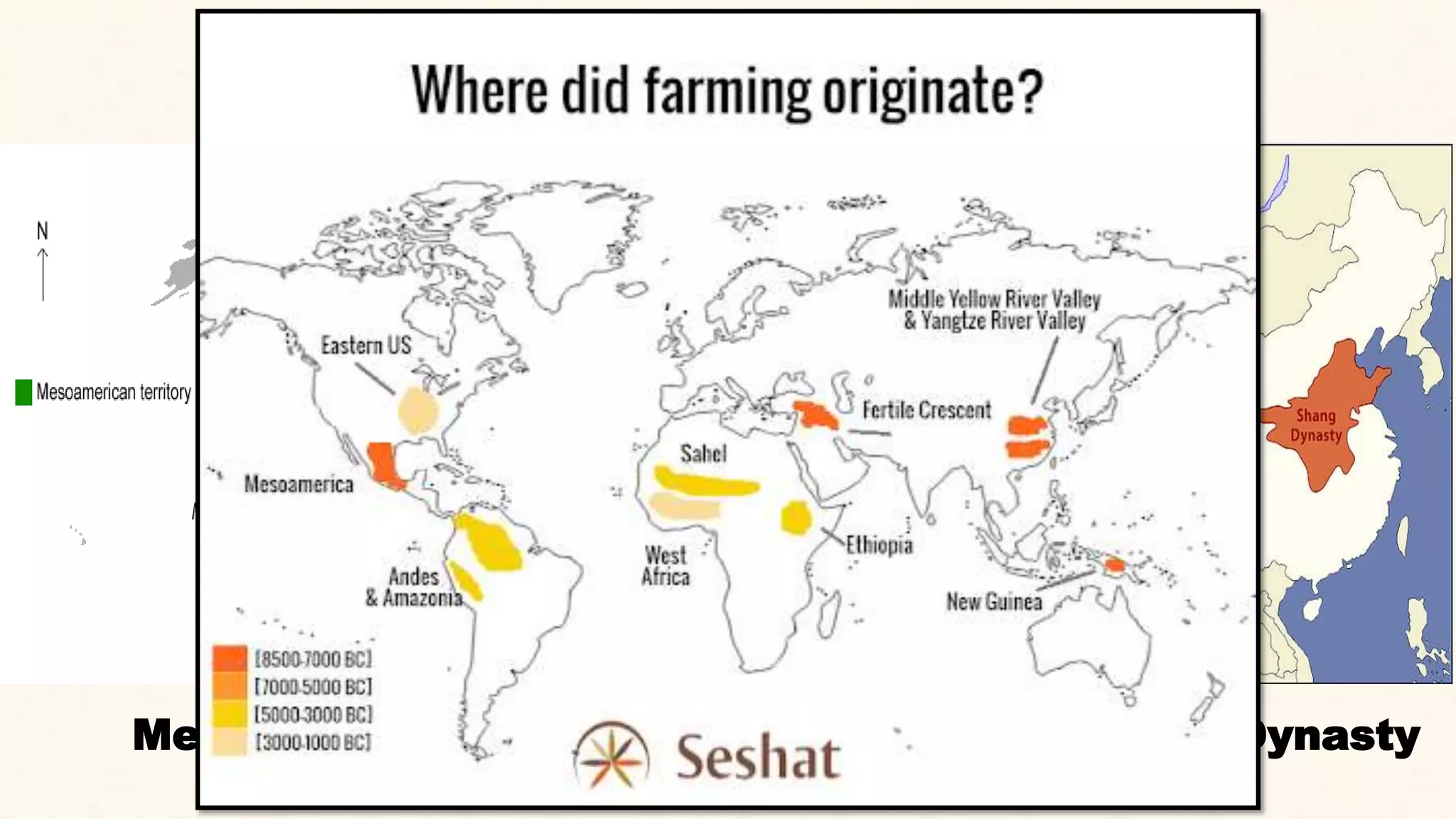The document discusses various subsistence strategies used by cultures to obtain food, including foraging, pastoralism, horticulture, and agriculture. It highlights the differences between these methods, the historical context of human food acquisition, and the impact of agricultural practices on social structures and communities. Additionally, it addresses the challenges faced by subsistence societies today due to climate change and urbanization.
